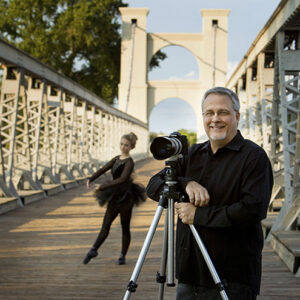 Calculating Exposure
Calculating Exposure
by Steve Kozak
M. Photog., CR.
CPP
The basics of photography begin with correctly exposing the sensor by finding the right combination of f-stops and shutter speeds. Exposure can be expressed in this formula:
Exposure = INTENSITY X TIME
or, E = IT
“Intensity” is the f-stop and “Time” is the shutter speed.
By the way, there is no actual multiplication taking place in this formula. It is used as a way of explaining the concept of keeping exposures “equal”.
“E” will represent the amount of light that reaches the sensor. If you remember any algebra, because there is an = in the equation, I can change my variables, so long as I keep them an equal value.
For Example:
E = 2 x 10,
and
E = 4 x 5
(E is the same answer in both, but we used different variables.)
Using this formula we can plug-in some f-stops and shutter speeds just to see what happens. So let’s do it…
E = I x T
E = F8 @ 1/125
(F8 and 1/125 are variables that I selected entirely at random for this example.)
In my sample, I stated E = F8 @1/125. If for some reason I wanted to change the F8 to F5.6, could I do it? YES! As long as I keep the amount of light that reaches the film equal!
-If I move from F8 to F5.6, I am opening up the lens to let twice the amount of light reach the sensor.
-In order to remain equal, I have to cut the light in half by moving the shutter speed to the next faster speed.
E = F8 @ 125
And
E = F5.6 @ 250
F5.6 @ 1/250 would be an equal, or equivalent exposure to F8 @ 1/125 because in both cases, the exact amount of light reaches the film. As a matter of fact, there can be many equivalent exposures:
F22 @ 1/15
F16 @ 1/30
F11 @ 1/60
F8 @ 1/125
F5.6 @ 1/250
F4 @ 1/500
F2.8 @ 1/1000
Each of the above exposures yield the exact amount of light onto the film. This process is the same no matter which f-stop and shutter speed combination you choose to start out with. The hard part about exposure is figuring out which f-stop and shutter speed to start with in the first place. (We will cover this in-depth later.)
It is at this point that you may be thinking, “Gosh, If F8 @ 1/125 will work, why the heck would I want to change to F4 @ 1/500?” This is where we first begin to realize the magic of photography.
Remember, F-stops control depth of field, so changing from F8@1/125 to F4@1/500 allows you to create an image with a shallower depth of field.

